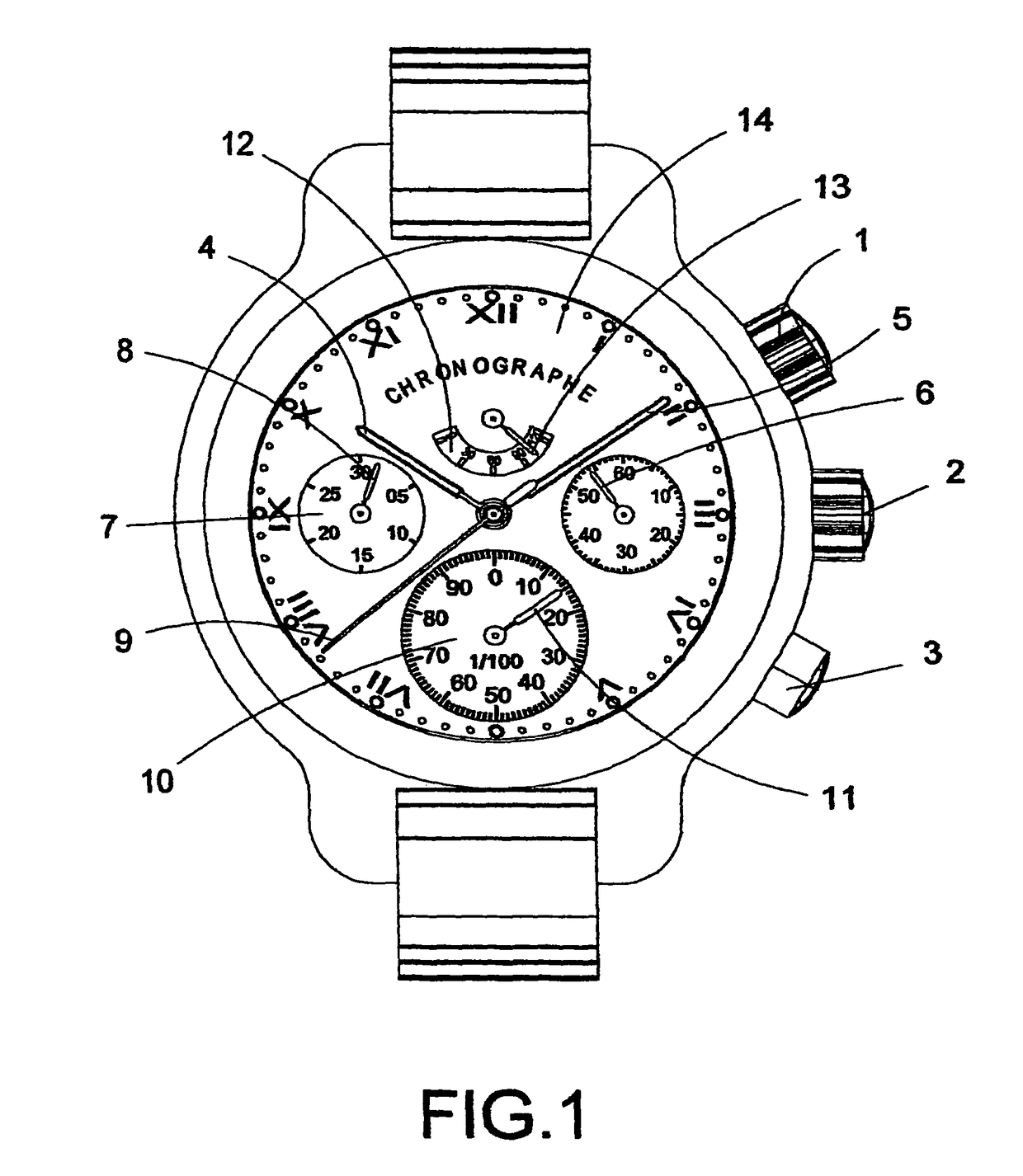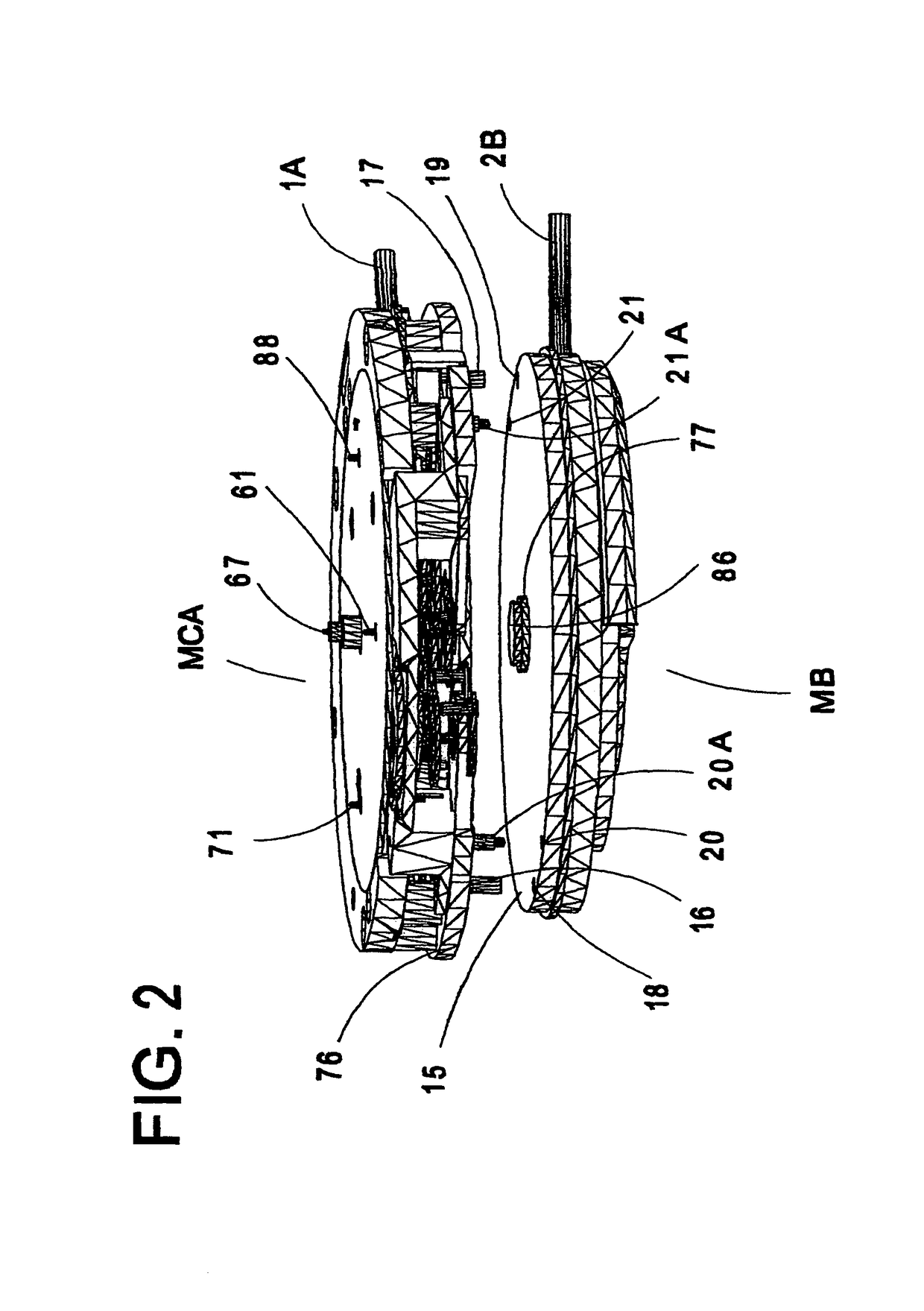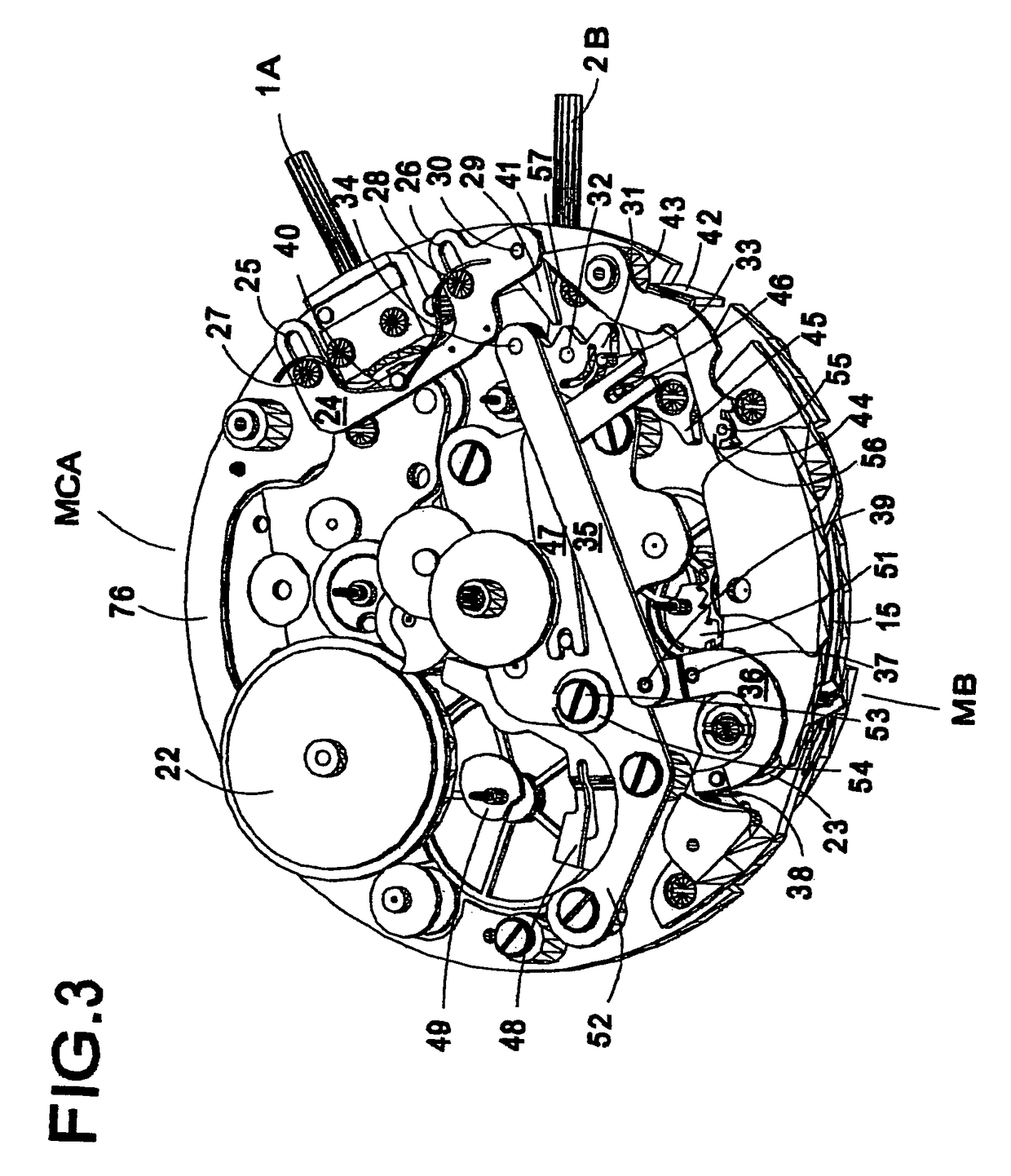Device comprising a clock movement and a chronograph module
a clock movement and chronograph technology, applied in the field of devices comprising clock movements and chronograph modules, can solve the problems of document not providing any teachings to the skilled in the art, notably in the direction of clock driving mechanisms, and high cost, and achieve the effect of low cos
- Summary
- Abstract
- Description
- Claims
- Application Information
AI Technical Summary
Benefits of technology
Problems solved by technology
Method used
Image
Examples
Embodiment Construction
[0025]The device according to the invention will be applied advantageously in a chronograph wrist-watch (not specifically referenced), as represented in FIG. 1. This watch shows: at two o'clock, a push-piece winding-button (crown) 1 for winding a barrel of the device's chronograph module—hereafter called autonomous chronograph module MCA—and for commanding the starting and stopping functions of the autonomous chronograph module MCA, at three o'clock, a winding-button (crown) 2 of the device's clock movement—hereafter called base movement MB—and at 4 o'clock, a push-piece 3 actuated for the resetting to zero and for the flight returning of the autonomous chronograph module MCA. In a preferred embodiment illustrated further below in relation to FIG. 9, the watch comprises a single winding-crown allowing to simultaneously reset and rewind, in different axial positions, the base movement MB and the auxiliary chronograph module MCA.
[0026]The chronograph watch enables the displaying of th...
PUM
 Login to View More
Login to View More Abstract
Description
Claims
Application Information
 Login to View More
Login to View More - R&D
- Intellectual Property
- Life Sciences
- Materials
- Tech Scout
- Unparalleled Data Quality
- Higher Quality Content
- 60% Fewer Hallucinations
Browse by: Latest US Patents, China's latest patents, Technical Efficacy Thesaurus, Application Domain, Technology Topic, Popular Technical Reports.
© 2025 PatSnap. All rights reserved.Legal|Privacy policy|Modern Slavery Act Transparency Statement|Sitemap|About US| Contact US: help@patsnap.com



